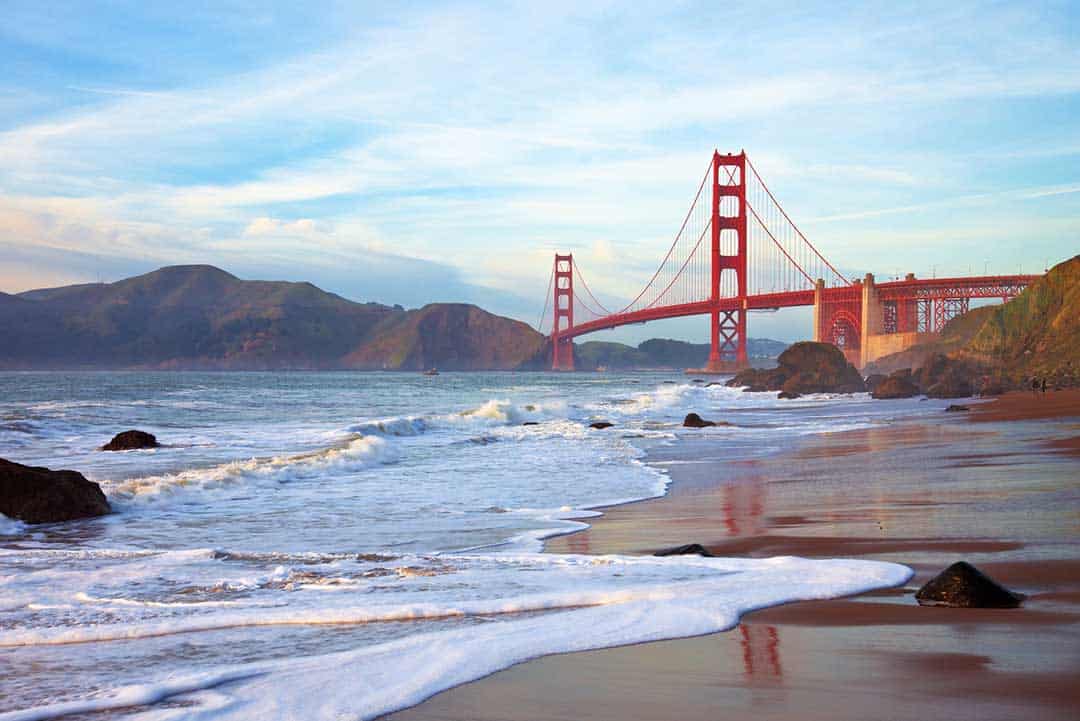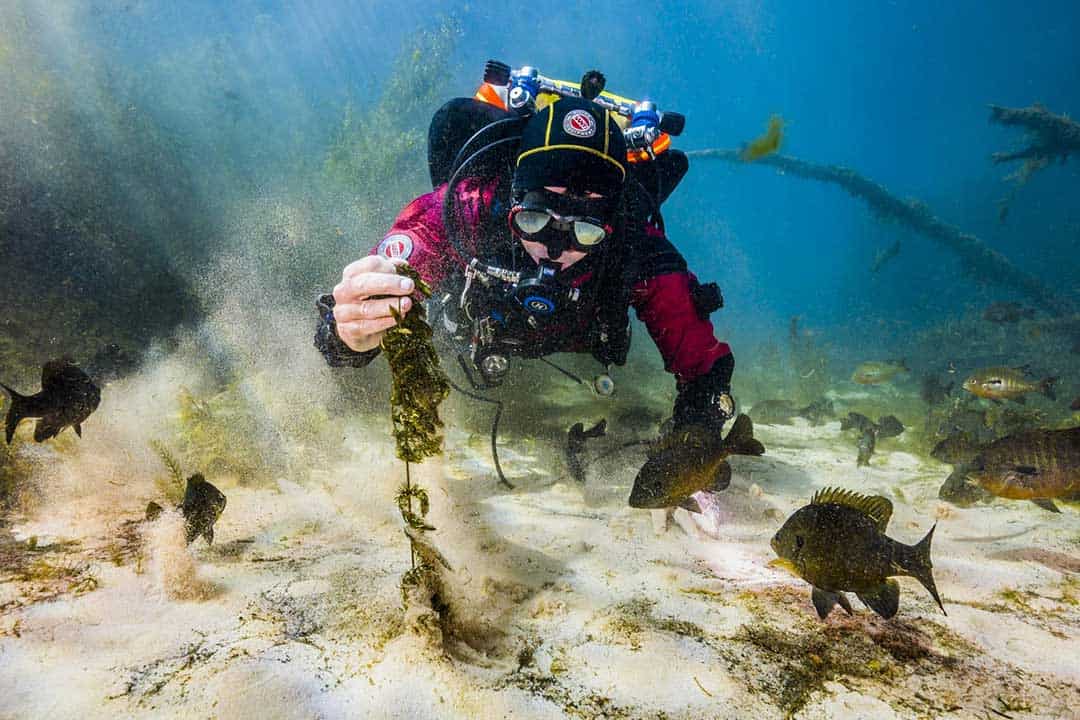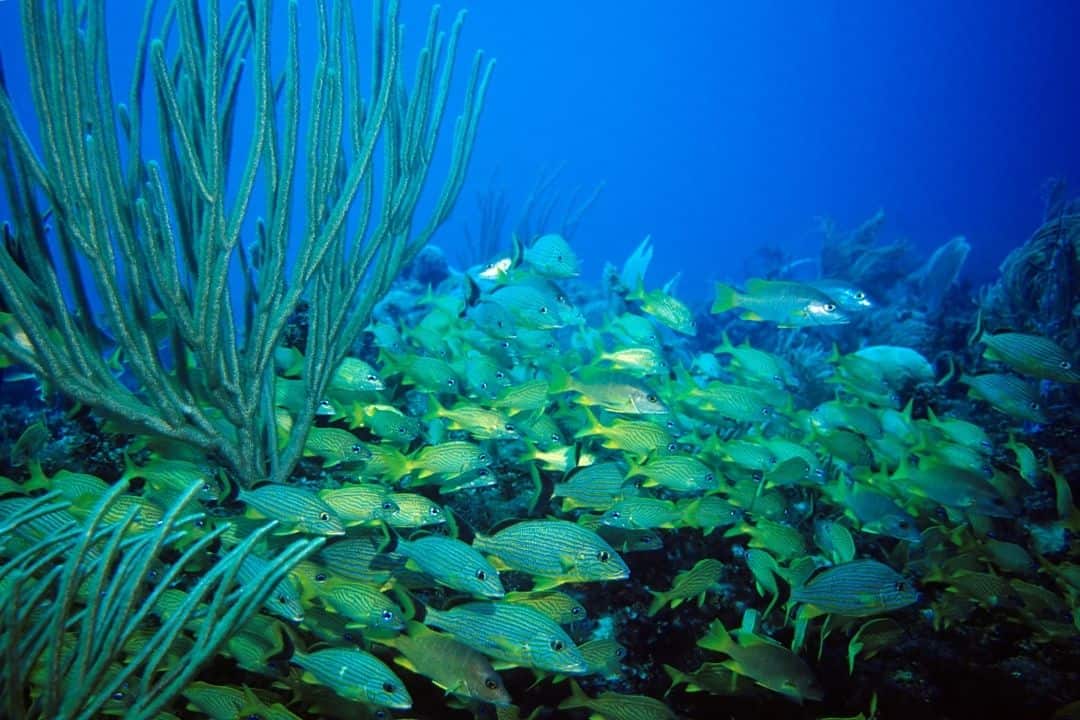I’ve heard many people assume that diving in New Zealand would be freezing and not very interesting, but this is a common misperception of those who haven’t visited these incredible islands.
This country really is a diver’s paradise. Accessible coastlines, marine reserves and hundreds of offshore islands make the underwater world surrounding this island nation vast and diverse.
Jacques Cousteau, a famous scuba diver and underwater photographer, once said that he thought that the Poor Knights Islands Marine Reserve, off New Zealand’s Tutukaka Coast, were one of the world’s top five diving locations in the entire world.
This is the scale you can use when diving in New Zealand!
The breathtaking landscapes of New Zealand have been showcased on many movie screens, from The Lord of The Rings to The Chronicles of Narnia.
The pristine rolling hills and topography have held viewers around the world captivated, but most people are still unaware of the wonderful diving this country has to offer.
New Zealand’s underwater world is vast and water temperatures are extremely varied throughout the country. Scuba diving in New Zealand is good year-round: in June-November water temperatures range from 59-70°F/15-21°C, while December-May sees the mercury rise to a comfortable 66-77°F/19-25°C.
It’s important to note that most divers wear a 7mm wetsuit in all seasons and dry suits are recommended for some of the southern fjords.
This may be a bit on the cold side if you’re used to strictly tropical diving, but you can be sure of one thing: donning that wetsuit will be worth it.
Though some of the best diving in New Zealand are wrecks, the marine life is incredible! From dusky dolphins, albatross, New Zealand fur seals, to sperm whales, which can be spotted all year round.
While known for a dramatic terrestrial landscape, you may not realize that New Zealand is also home to 36 marine reserves.
There are 26 ray species and 113 shark species that have been documented in New Zealand’s waters!
There is so much to see, in fact, that we had to divide the best dive sites in New Zealand into two distinct regions, the North and South Islands.
Each island offers sites to suit all dive preferences and abilities. Did you know that between the diving around the North Island and that offered around the South Island it would take a lifetime of dives to see it all?
You really can try all types of diving in New Zealand!
Having lived and worked in Auckland, New Zealand, the ‘big city’ of the Northern island, I had the distinct pleasure of exploring many of the sites on this list, and I can say with certainty that there is nothing quite like visiting and diving this country anywhere else in the world.
Make sure to learn about the Māori, the indigenous Polynesian people of mainland New Zealand, and have a lamb sandwich or fish and chips after your dive!
Check out the best scuba diving spots in New Zealand, categorized by North and South islands.:
North Island, New Zealand
The northern part of the Islands includes sub-tropical reefs and warmer waters that attract colorful fish year-round.
Dive deep into the clear blue seas, navigate through wreck dives around the Bay Islands, or meet the many sea mammals in the waters of New Zealand.
You’ll be diving with bronze whaler and mako sharks, tuna, kingfish and marlin.
Poor Knights Island
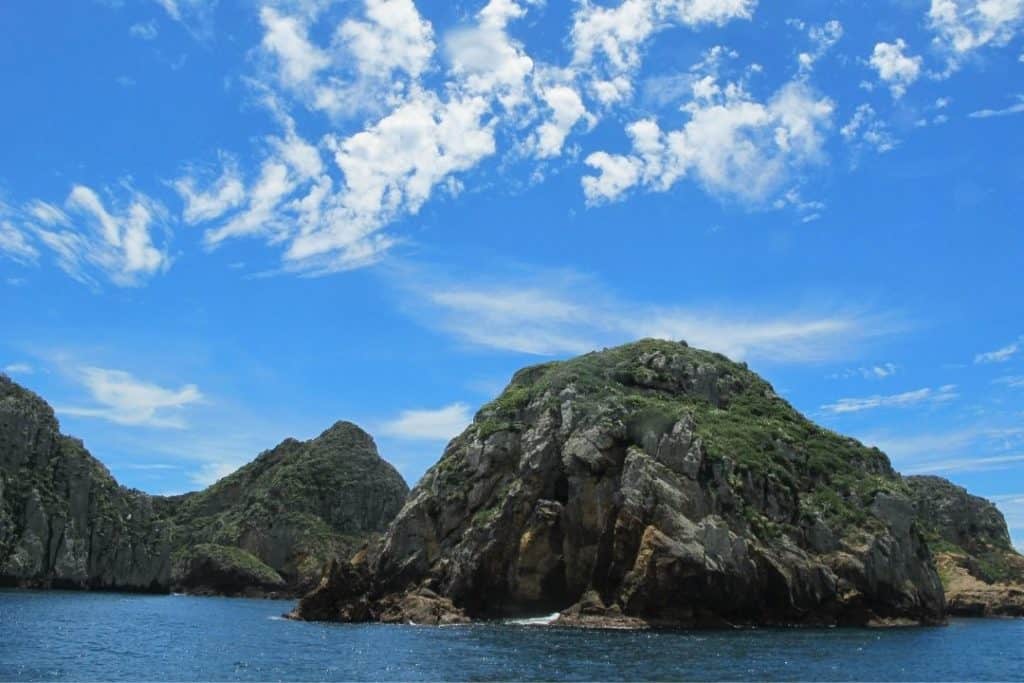
Hailed as one of the world’s top five scuba diving locations by the late Jacques Cousteau, the Poor Knights Islands, off New Zealand’s Tutukaka Coast, can only be described as spectacular.
The 11-million-year-old volcanic islands, washed by warm currents swept South from the Coral Sea, are home to many interesting plants and fish.
You can expect many arches, caves, tunnels, and stunning wall dives in crystal clear water, making diving here a bucket-list experience.
As a protected marine reserve, this is arguably New Zealand’s most famous diving area. The dive sites here are bursting with blue maomao, snapper, kingfish, morays and brilliantly colored nudibranchs.
Larger tropical species are also spotted here and during the warmer periods, turtles, whales and even manta rays can be frequent visitors.
There is a large resident (and visiting) population of sting rays which attract orcas who come to feed on them – a phenomenal sight.
For this reason alone, the Poor Knights is a must on your bucket list of scuba dive sites to visit while visiting New Zealand.
Bay of Islands
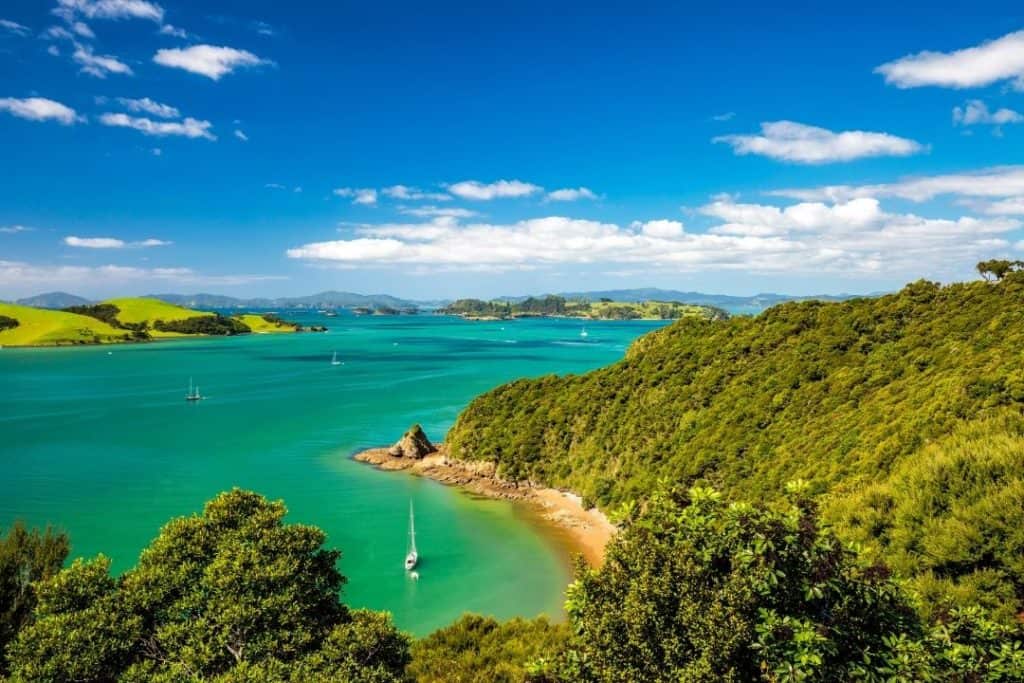
Along with the Cavalli Islands, the Bay of Islands is one of the most popular scuba diving playgrounds in New Zealand.
Located on the east coast of North Island, the bay has around 150 small islands surrounded diverse marine life, and lots of it. For this reason, the area is also known as the ‘Bay of Plenty’.
The dive site is best known for excellent wreck diving with several purpose-sunk shipwrecks dotted about the bay, including the Greenpeace ship, the Rainbow Warrior, and the wreck of the HMNZS Canterbury.
Both of these iconic New Zealand wreck dive sites are now encrusted in stunning colourful jewel anemones and have become part of the living reef.
The wrecks are also home to an abundance of fish life and macro critters.
Rainbow Warrior
The Rainbow Warrior was a Greenpeace ship on its way to protest France’s nuclear testing in Muroroa when it was sabotaged in the Auckland Harbour and sunk in 1985.
It now rests as an artificial reef in the Cavallii Islands attracting all kinds of marine life.
Ironically, while I was diving this site, we were guided by a French divemaster, which the captain was sure to point out. Perfectly named, it truly looked like a rainbow ship underwater.
We also had a couple get engaged underwater on our trip and we all clanked beers on the dive boats ride home to toast the new couple!
The Canterbury
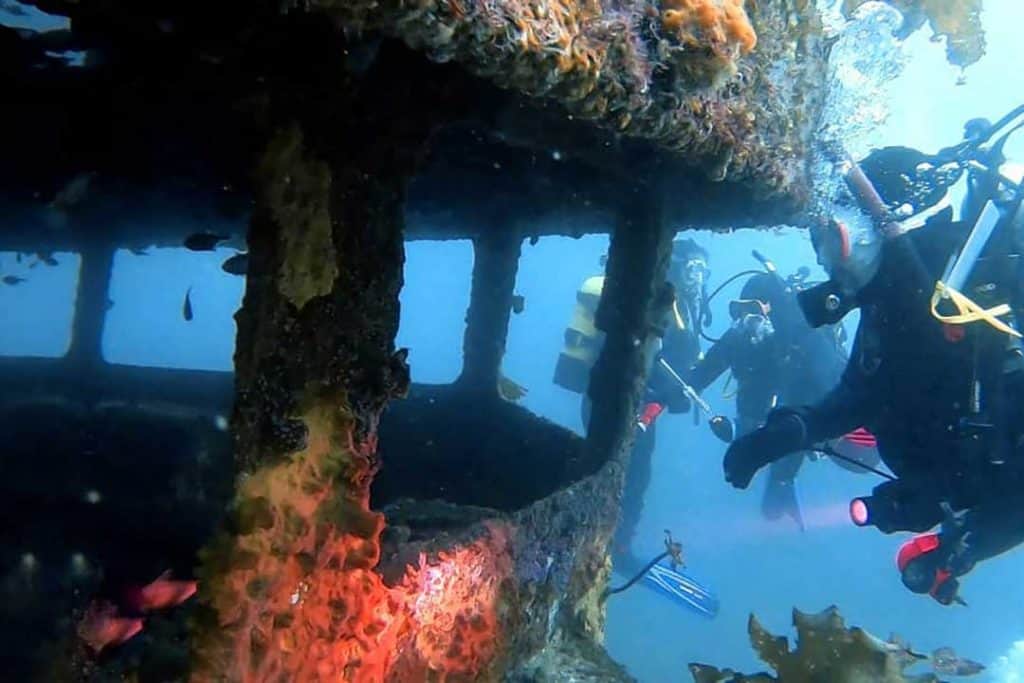
If you are a qualified diver then you have the opportunity to dive to one of the Bay of Island’s most popular dive sites, the wreck of the HMNZS Canterbury.
This huge and intact shipwreck is impressive to swim through, and a helicopter hanger.
Goat Island Marine Reserve
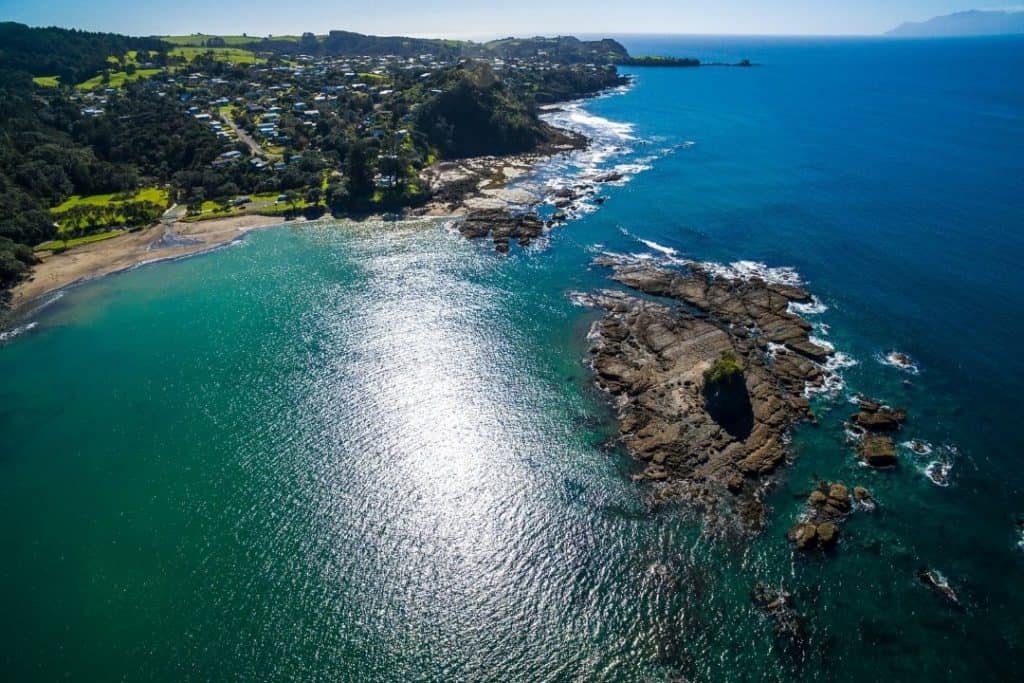
Goat Island is the perfect daytrip for those visiting
Auckland and hoping to see a bit of the area’s nature. Located one hour north of the city, this is a very famous site for it’s interesting topography and sting rays.
Although I just snorkeled here, it was so much fun! I saw an incredible amount of tropical marine life and the area was just beautiful.
The reserve is a magical marine world featuring an array of ecosystems ranging from underwater cliffs and deep canyons to waving seaweed forests and vast sand flats that brim with sea creatures.
Divers will see everything from anemones and sponges to huge schools of fish on a single dive.
Marine life sightings here are as varied as the topographies and include snappers, blue cod, crayfish and a range of different shellfish species, seaweed forests, sea squirts and anemones.
This is a large area and there are several different dive sites. Here is a list of Goat Island’s Best Shore scuba Dive Sites:
- ABC Bay– A mix of kelp forests and cliff side in this bay which is home to stingrays and blue maomao.
- Shag Rock– A kelp-surrounded rock and a magnet for marine life.
- Waterfall Reef– Look out for crayfish and schools of fish in this area.
- Eagle Ray Flats– Huge snapper, eagle rays and plenty of fish are the highlight here.
- Yellow Sponge Garden– Macro lovers will be in their element here.
- Caves – You’re sure to see colorful anemones, nudibranchs and sponges.
The Coromandel Peninsula
This area is dotted with islands, which creates a perfect breeding ground for many healthy dive sites.
Hiding inside the kelp and crevasses you will find trevally and blue maomao.
You’ll also have the pleasure of seeing moray eels, stingrays, wrasse, demoiselles, porcupine fish, snapper and many other species of marine life.
Mercury Islands
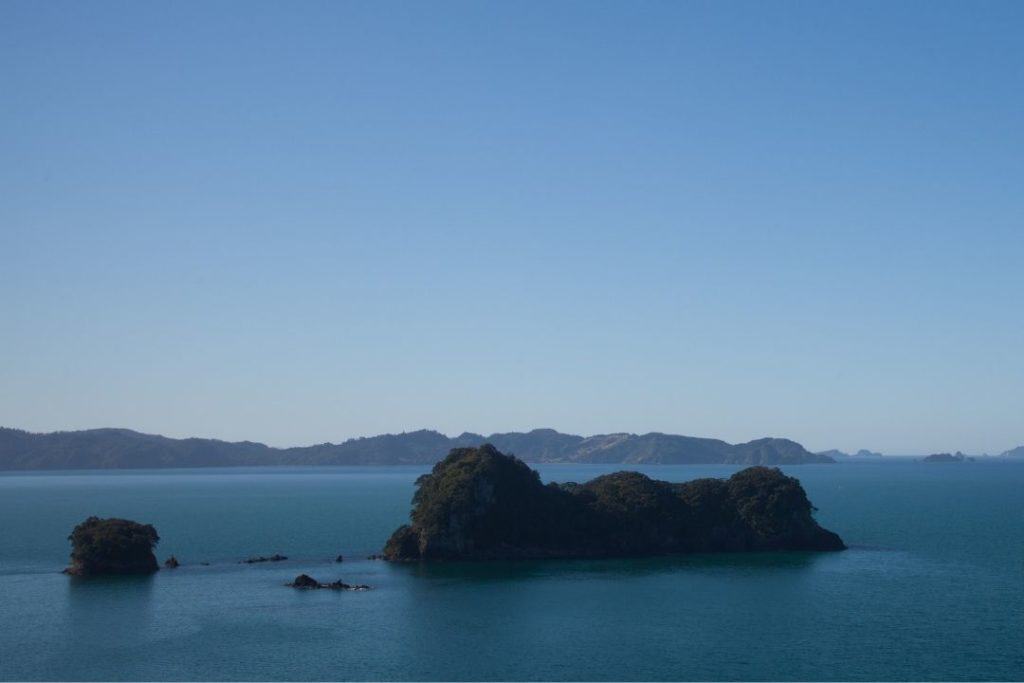
The Mercury Islands should not be missed. Here you can swim among schools of fish, sharks and look out for spot octopus in the marine reserve surrounding these waters.
In the summer months, large kingfish school with giant boar fish, john dory and tarakihi. This dive location can be accessed from Whitianga on the Coromandel Peninsula.
It’s important to note that Coromandel is also very popular for ‘Cathedral Cove’ which is the beautiful site of a scene from The Chronicles of Narnia, as well as Hot Water Beach, where you can dig your own hot tub!
Te Whanganui-A-Hei (Cathedral Cove) Marine Reserve is on the Coromandel Peninsula in New Zealand.
The cave and beach were used as the tunnel through which the Pevensie children first re-enter Narnia in the movie version of The Chronicles of Narnia: Prince Caspian.
More recently the cove was used as one of the locations in the music video for the song “Can’t Hold Us” by Macklemore & Ryan Lewis featuring Ray Dalton.
Hot Water Beach is a beach on Mercury Bay on the east coast of the Coromandel Peninsula, New Zealand.
Within two hours either side of low tide, it is possible to dig into the sand allowing hot water to escape to the surface forming a hot water pool.
The water, with a temperature as hot as 64 °C (147 °F), filters up from two underground fissures located close to each other.
These natural springs can be found on the beach opposite the offshore rocks. Visitors often dig large holes and relax and soak in the thermal water.
Wellington / The South Coast
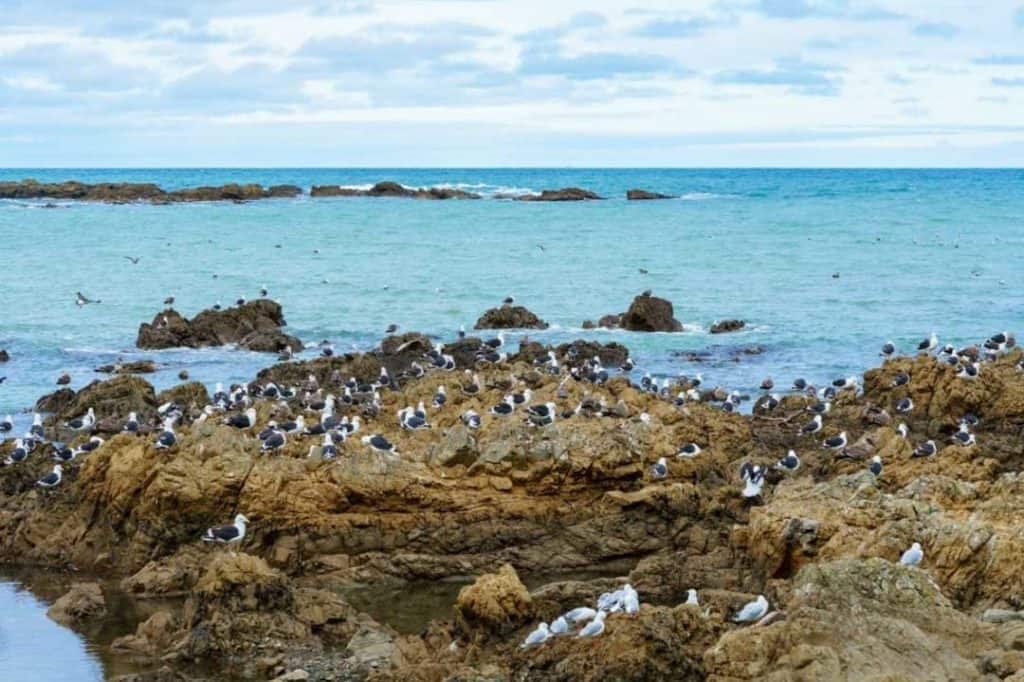
Shore diving around Wellington and the Southern Coast is an incredible experience for all levels of divers. The stunning beaches in this area also make for a beautiful backdrop.
The south coast is a favorite shore dive for many locals and is home to many crustaceans and cephalopods.
Rocky reefs and copious marine growth make the area an attractive breeding ground for a large variety of other marine species, too.
There are three specific dive sites in Wellington and the Southern Coast that are very popular:
- Taputeranga Marine Reserve: There is plenty to explore and a myriad of marine life species.
- Whitireia Park and Titahi Bay: Suitable for beginners with stingrays and seahorses to be found at just 3 meters/10 feet.
- Wellington Harbor: Known for seahorses, pipefish, starfish, schools of wrasse.
Note that water temperatures in this area are a bit colder than the rest of the North island and range from 50 °F (10 °C) in winter to 62 °F (17 °C) in summer.
The best time for diving here is from January through to June.
Tawharanui
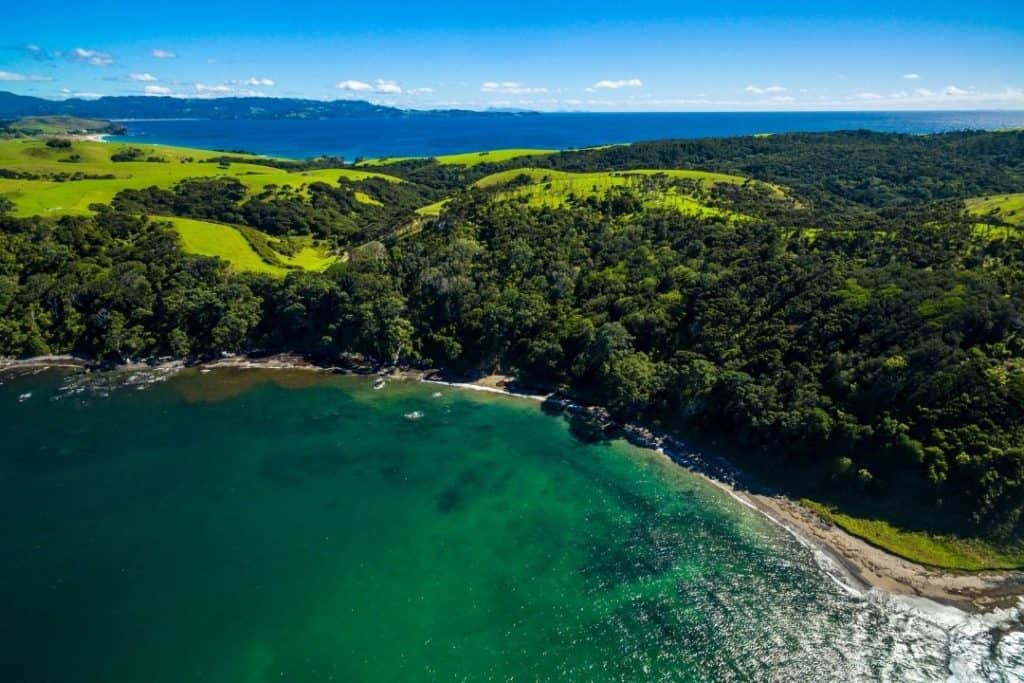
Tawharanui Marine Park is a protected area, which means there are many crayfish and other crustaceans here. It’s not unusual to see dozens of crayfish and a handful of spiny rock lobsters.
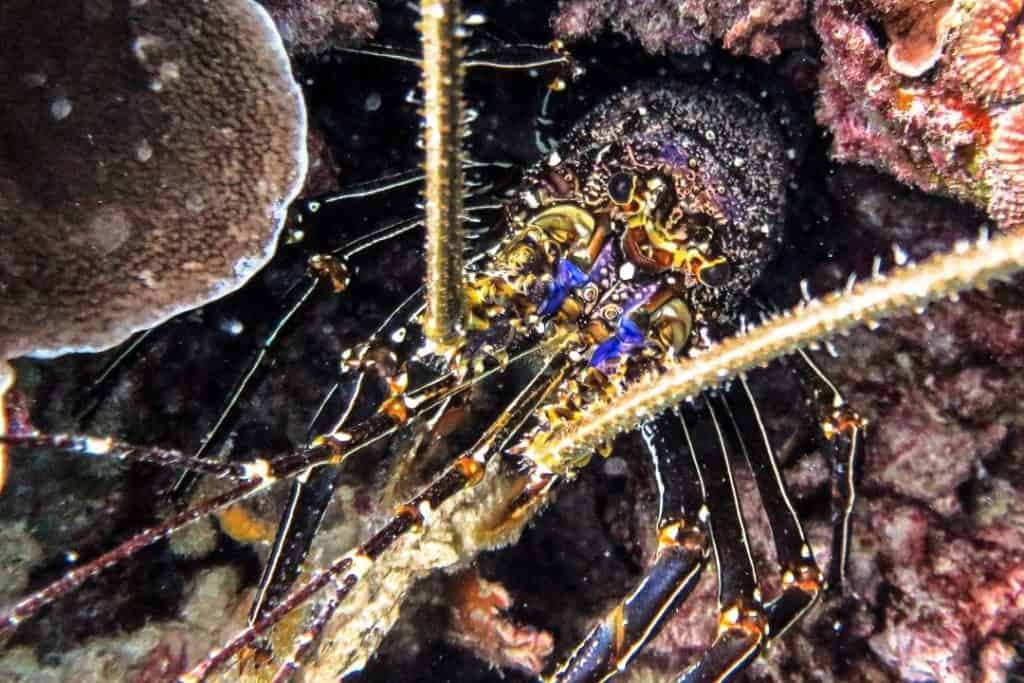
There is usually snapper cruising around, schooling silver drummers and jack mackerel, stingrays, eagle rays diving down to the sand and rearing back up again, kaleidoscopic jewel and common sea anemones, sponges and nudibranch.
Octopus and eels are common sightings as well.
White Island
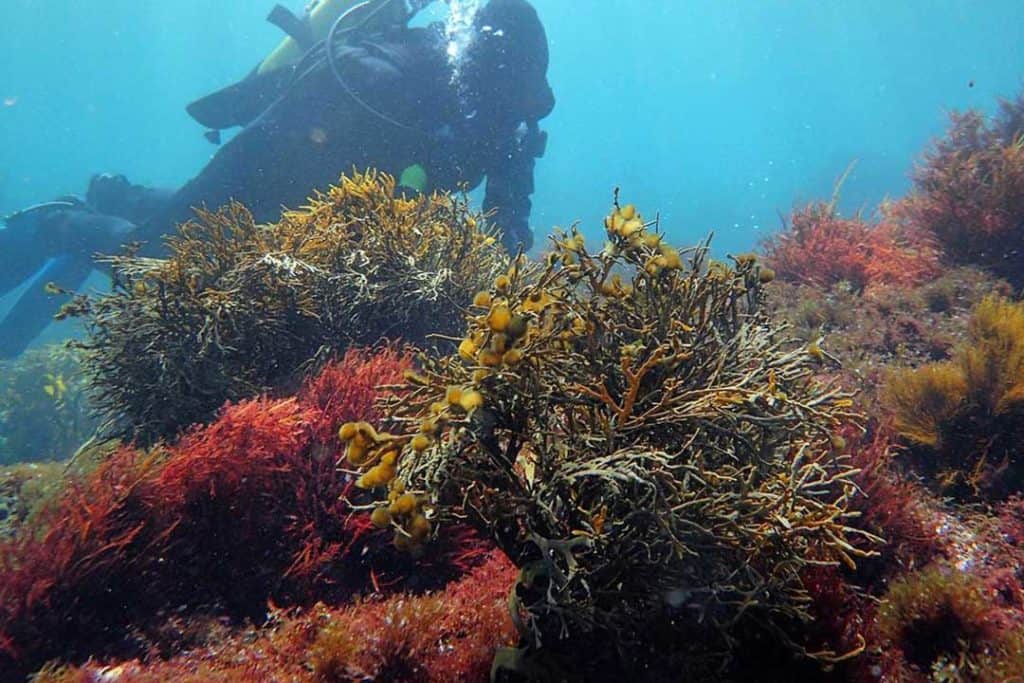
The waters off White Island, New Zealand’s most active volcano, are home to many tropical species and larger pelagic fish.
There are three dive spots: Volkner Rocks, Club Rocks and Liason’s Reef.
Be sure to check out the underwater vents in this unique volcanic location. White Island and its dive sites can be accessed from Whakatane in the Bay of Plenty.
Tutukaka
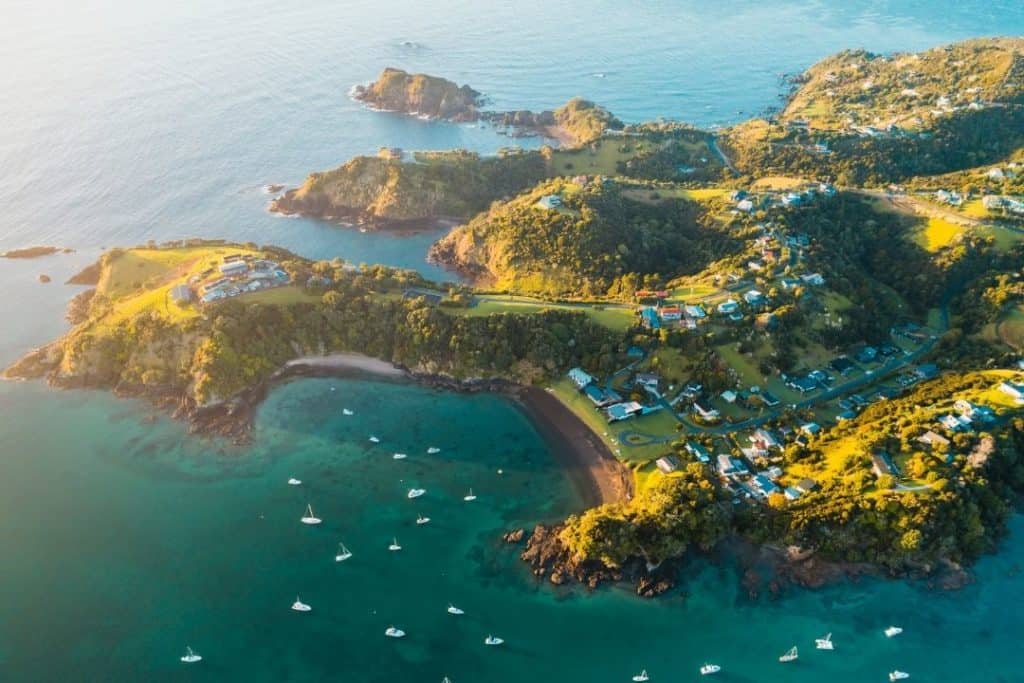
Tutukaka is on the beautiful Northland coast of New Zealand’s North Island with coastal waters warmed by currents from the Coral Sea that are home to a wide range of tropical corals and fish.
There are amazing underwater geological formations to scuba dive and explore here. In the summer months, you’ll dive with turtles, manta rays, and migrating humpback whales.
South Island, New Zealand
Fiords are a highlight of this area of New Zealand’s marine environment and create the perfect environment for black coral.
You’ll enjoy unique topography and many marine species that you won’t find elsewhere on the South Island!
Milford Sound

Situated on the west coast of the South Island in New Zealand, Milford Sound is a beautiful fjord that is home to towering cliffs that plunge into deep, inky waters.
This area was carved by glaciers during the Ice Age. The South Island fjords also have large colonies of New Zealand fur seals, penguins and schools of dolphins.
Milford Sound and Doubtful Sound are known to have black and red coral giving you the opportunity to see wildlife that would usually be found much deeper in the ocean.
The giant black coral trees break up the inner fiord rock walls to create a dream location for divers.
Underwater photographers will rejoice at the spiny sea-dragons, along with schools of demoiselles, leather jackets and the Jason Mirabilis nudibranch.
Fiordland National Park
The fiords in Fiordland National Park shelter its water, keeping it calm and clear for undisturbed visibility.
Kaikoura
Kaikoura is New Zealand’s top diving destination for seeing large marine mammals like dolphins, seals, whales, orcas, and a variety of seabirds.
You’ll also dive with plankton-loving animals, such as dusky dolphins, fur seals, humpback whales, and huge sperm whales.
Aramoana, Dunedin
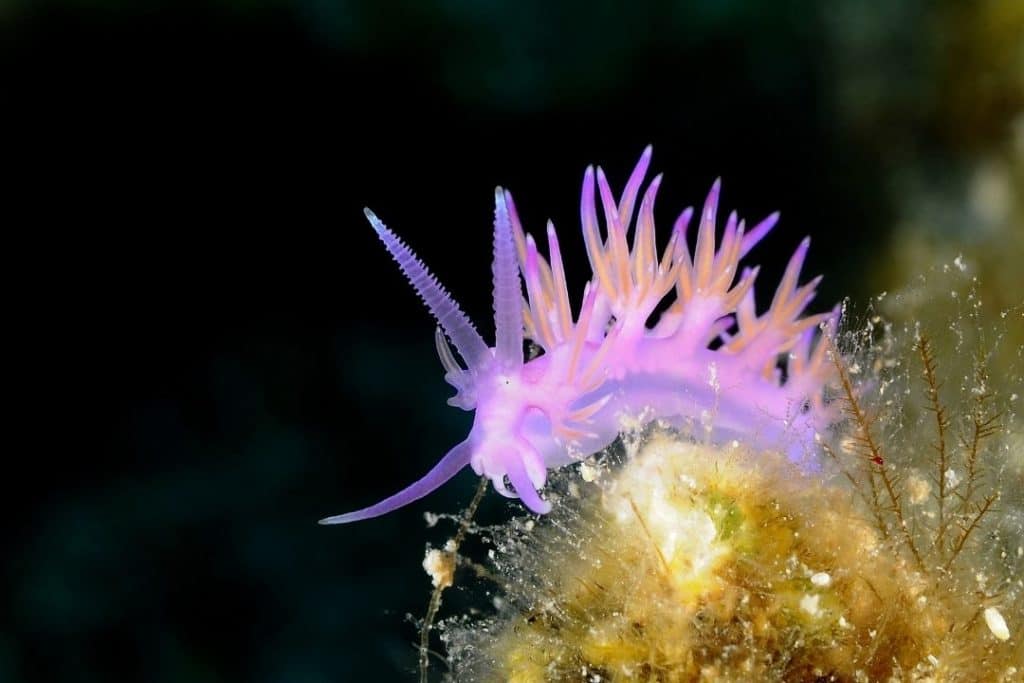
This area is known for kelp forests, wrecks, and varied marine life.
Macro underwater photography lovers will be excited to spot seahorses, nudibranchs, eels, crayfish and carpet sharks.
This region also attracts seven gill sharks, curious cod, green-bone, blue moki, wrasse and the most unique species – the New Zealand hooker sea lion.
The area is also a voluntary marine reserve so you can be sure that it’s in great condition.
Aramoana Mole
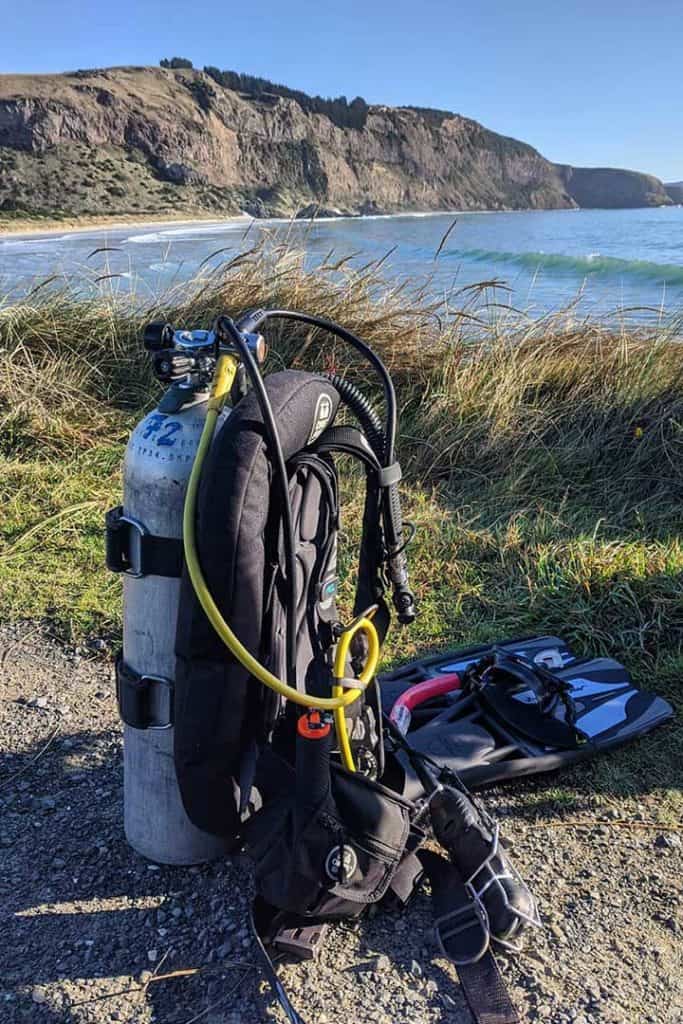
An easily accessible dive near Dunedin, Aramoana Mole is a place to explore underwater forests and its inhabitants.
You’re also likely to bump into some seals along the way too. Be prepared for the cold southern South Island waters.
Shag Point
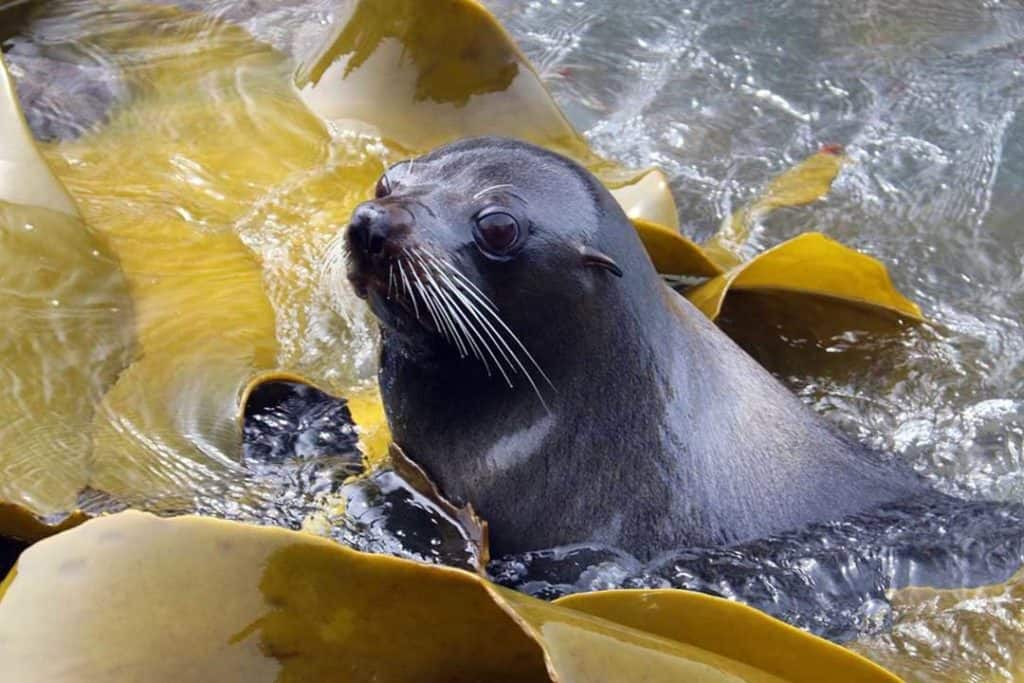
Shag Point offers several entry points located approximately 50km/31miles (by road) north of Dunedin.
Shag Point boasts beautiful areas of reef and amazing kelp beds, visibility is variable here and the sandy bottom is easily disturbed.
This area is known for its excellent underwater photography opportunities.
Marlborough Sounds

The sounds offer something to interest every diver, from deep technical wrecks like the Lermontov, to shallow wrecks and friendly blue cod.
The winding waterways also make for very scenic dive boat rides with whales, seabirds and dolphins to be seen along the ride out!
Mikhail Lermontov
Sunk in 1986 under mysterious circumstances, this Russian cruise liner is the largest wreck dive in Australasia and now rests, fully intact, on its starboard side.
Diving on the Mikhail Lermontov is a fantastic experience, with many areas accessible without requiring penetration.
Long Island
This New Zealand marine reserve was famously named by Captain Cook and is teaming with marine life.
Look out for the giant crayfish which can be found in the crevices and underneath boulders, as well as blue cod, leather jackets and wrasse.
Stewart Island
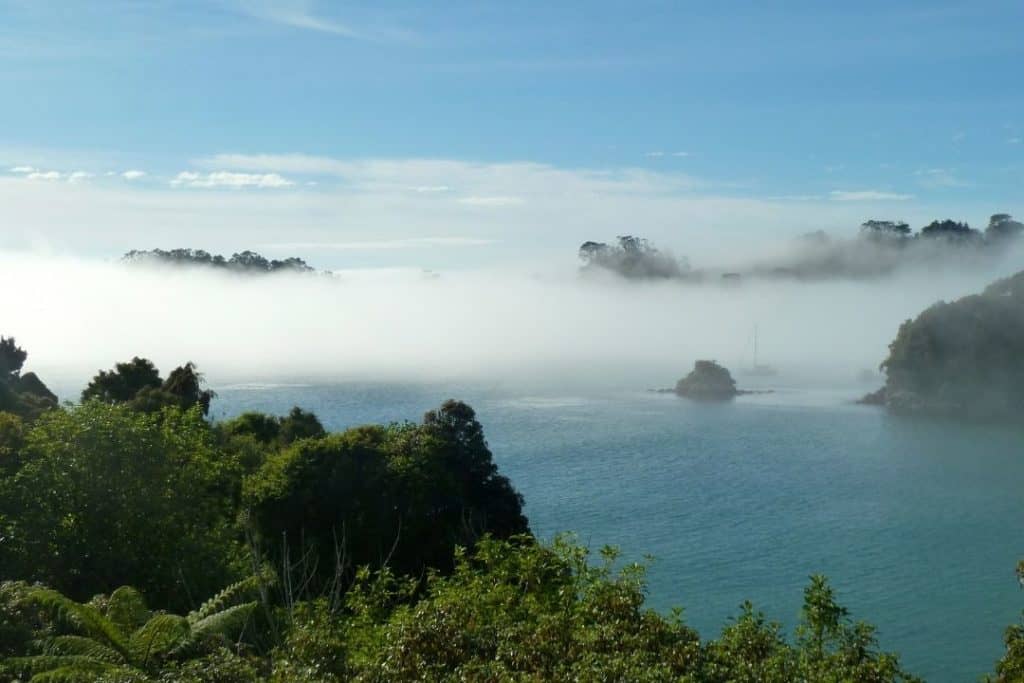
Stewart Island lays to the south of New Zealand’s South Island, separated from the mainland by the Foveaux Strait.
Maori named Stewart Island “Rakiura” – which means “Glowing Sky”, as Stewart Island enjoys spectacular sunrises, sunsets and aurora.
It has one of the richest seaweed floras in New Zealand due to its many habitats and the influence of its two major ocean currents.
You’ll dive with fur seals, blue cod, cruising sharks, colourful and equally delicate looking tunicates and anemones, starfish, gobies, southern pig fish, seahorses clinging to kelp, crested weedfish, octopus.
There are many shore diving options including Oban, Golden Bay Wharf, Halfmoon Bay and numerous others along the coastline.
Kaikoura, South Island
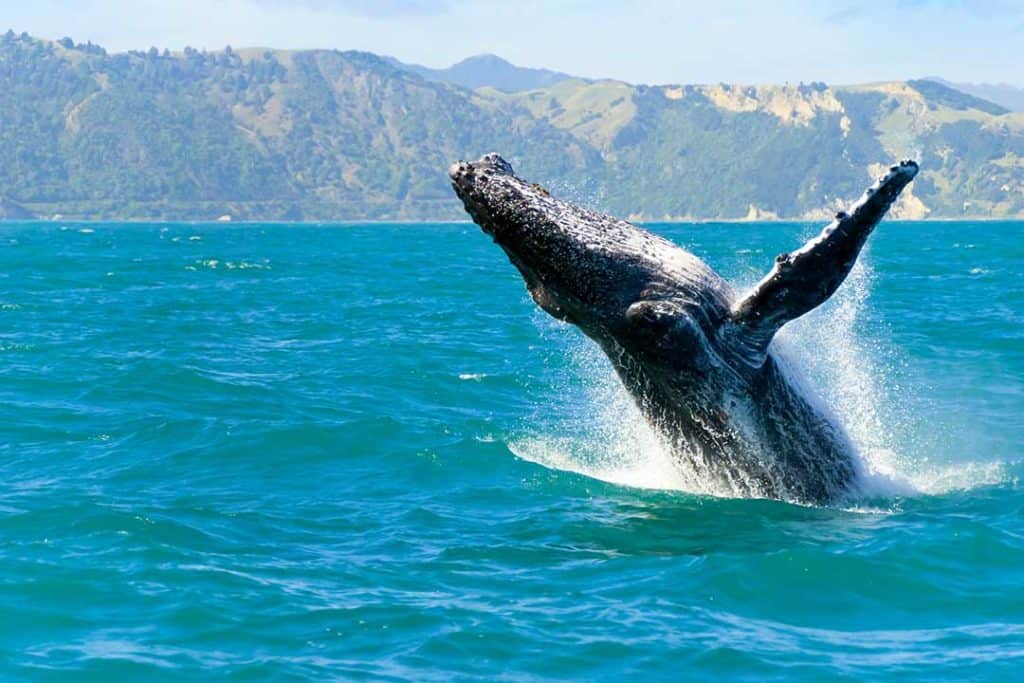
The South Island town of Kaikoura is well-known for attracting sperm whales, dusky dolphins, New Zealand fur seals and albatross.
Although a highlight here is to go swimming with the sea mammals, no best destinations guide and no trip is complete until you’ve dived the stunning kelp forests and limestone reefs here as well.
Conclusion
Whether you are a beginner or an advanced scuba diver, New Zealand has a wealth of incredible dive sites that offer unforgettable diving experiences.
From shipwrecks and ancient caves to rare black coral and pods of migrating whales, the island’s bays, coves, and channels promise to deliver one-of-a-kind diving adventures.
